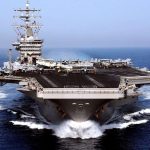The history of maritime world is full of various accidents, many of them being due to structural failure. It is therefore important for naval architects to keep in mind the various loads that a ship could be subjected to, in her entire lifetime in the worst possible scenarios, when designing the ship.
Although several accidents occur due to negligence or other elements such as fire, failure in ship structure is much more likely to occur due to a combination of fatigue and corrosion. We have already studied about the ship hull design and know that the hull is the safe casing which prevents water ingress apart from other support functions. So let us study about the various modes of failure leading to ship hull breach, along with the causes of those failures.
Modes of Failure of Ship Hulls
From the loading point of view, a ship is essentially an elastic beam floating on the water surface and subjected to a range of fluctuating and steady loads. These loads will generate bending moment and shear force which may acting on the ship.
Forces on the hull include :
· Action of sea
· Force acting on the heavy items composed of gravity forces and the dynamic forces due to acceleration imparted by the ship’s motion
· Thrust due to main propulsion forces on the hull
Failure is said to occur when the structure can no longer carry out its intended function
Although most structural components are designed in such a manner that if one element fails, it sheds its load on to another element which can withstand this additional load, hence normally this does not lead to an immediate catastrophe but immediate remedial action is certainly necessary to prevent further damage .
However there is a phenomenon known as the “domino” effect, wherein the surrounding structural elements fail in succession and the result can be loss of the ship, hence the necessity of immediate action mentioned above.
Causes of Hull Failure
Listed below are three reasons as to why the ship’s hull may fail.
1. Failure may occur due to the hull structure becoming distorted on being strained beyond the yield point. This will lead to a permanent set and distortion of the structure.
2. Failure may also be caused due to cracking of the hull structure. This occurs when the material can no longer sustain the load applied on it various sections. The loading may exceed the ultimate strength of the material or more likely the failure is due to fatigue of the material leading to a cracking and ultimate fracture.
Even if the cracks in the hull do not lead to complete fracture, they can prove disastrous as it can lead to leakage and thus cause flooding and consequent sinking of the vessel,
3. Failure may also be due to the structural instability. Very large deflections can occur under relatively lighter loads, and the structure behaves like a crippled strut.


